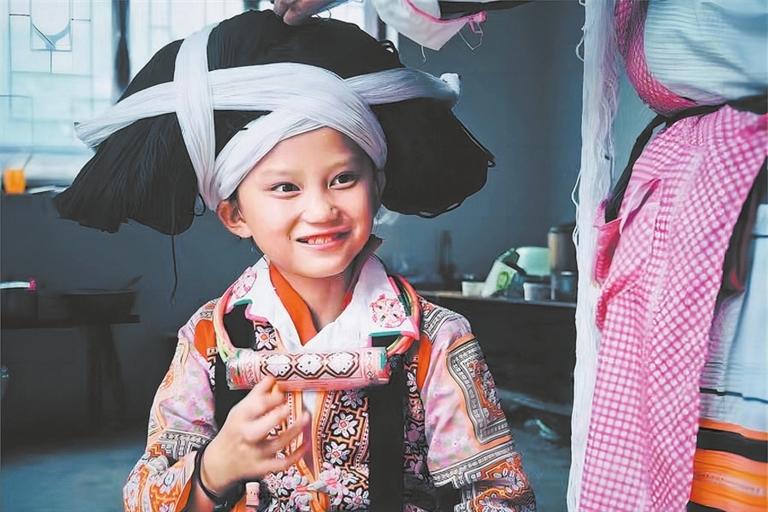



CHINA’S first ecomuseum in southwestern Guizhou Province nestles in mountains and was built to protect the Qing Miao culture, an ancient and mysterious branch of the Miao ethnic group. There were less than 5,000 Qing Miao people in the mountains from 1,400 to 2,200 meters above sea level in Liuzhi Special District and Zhijin County when a research team organized by the Chinese Museums Association traveled to the area in early 1995. The symbolized buffalo horn-shaped head ornament, traditionally used by women, also has the Qing Miao people known as “the longhorn Miao people.” The eye-catching head ornament is tied with horn-shaped wooden boards in hair, twined by linen and wool thread, or hair as long as three meters and weighing around two kilograms. The Qing Miao people wore this head ornament to scare off beasts while escaping wars and moved to forests in the early Qing Dynasty (1644-1911). “Back then, the Qing Miao people still lived in a closed environment and had a self-sufficient natural economy, which was rare to see,” recalled An Laishun, who was among the research team members, and now is the chairman of the regional alliance of Asia-Pacific countries of the International Council of Museums. The research team was invited by the provincial cultural department to build a new type of museum in the province. Finally, team members, including Chinese and Norwegian museum professionals, decided to set up the country’s first ecomuseum in Suojia Miao, Yi and Hui Township. Sponsored by the Chinese and Norwegian governments, construction of the ecomuseum was launched in 1997. It opened to the public in October 1998. The Liuzhi Suojia Ecological Museum consists of a Qing Miao community and a documentation center. The community covers 12 villages distributed over more than 120 square kilometers. The documentation center in Longjia Village holds all data and documentation of the culture, such as tape recordings of oral history, photographs, written sources, and valuable objects, such as spinning machines, looms, ethnic attire and musical instruments. Unlike traditional museums, which transfer cultural heritage to museum buildings, the ecomuseum protects and preserves cultural heritage in its original state in its community and environment. Over the past two decades, experts and local people have helped protect the local ethnic culture. The museum put the remote area on the map, closing the distance between villagers and the outside world. Over 70,000 domestic and foreign tourists visit the ecomuseum annually, said Luo Gang, curator of the ecomuseum. However, the outside world also brought challenges. “As links between the area and the outside world have strengthened, the balance between modern life and traditional culture and living standards has been challenged,” An said. “We applied for funding from the local government to tailor 50 spinning and weaving machines and distributed them to villagers who know how to make traditional clothing for free. And we encourage them to pass on their weaving skills to young people,” Luo said. A Qing Miao clothing processing factory was even opened in Gaoxing Village, providing jobs, increasing income for villagers, and passing on the ethnic tradition. Luo also applied for governmental funding to protect 10 traditional thatched-roof wooden and mud dwellings in the community. “Combining cultural heritage protection with tourism and cultural and creative industries will be one of the focuses of the ecomuseum’s future development,” said Pan Shouyong, an archaeology and museology professor at Shanghai University. (Xinhua) | 
